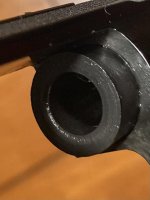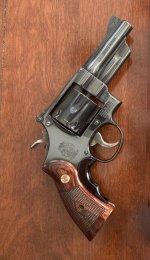Another thread got me to thinking(I know dangerous)
Are some powders more prone to flame cutting than other powders? I load 44 mag with H110 and I know the muzzle flash is a big ball of fire.
I don't shoot whimpy loads and like ringing steel at 100 yrds. I am happy with H110 but if theres a better powder with less flame cutting that would make the revolver happy too.
Are some powders more prone to flame cutting than other powders? I load 44 mag with H110 and I know the muzzle flash is a big ball of fire.
I don't shoot whimpy loads and like ringing steel at 100 yrds. I am happy with H110 but if theres a better powder with less flame cutting that would make the revolver happy too.




